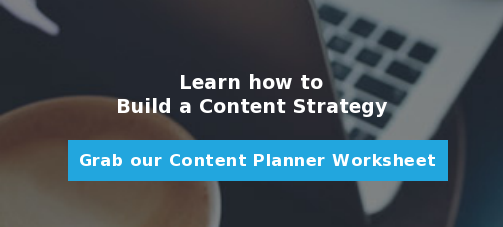
Inbound Marketing in the music industry is all about placing appropriate content in the right place at the right time to the right people. Using this comprehensive approach makes your marketing dollars reach further and increases your return on investment multiple times over.
That sounds great, but how do we actually execute this? What's the pragmatic approach to Inbound Marketing? Glad you asked. Without further ado, Content Strategies for Inbound Marketing in the Music Industry.
But first,
Make sure you check out the first two blogs in this series. These give a great run down of Inbound Marketing and the concept of a Buyer's Journey, which I'll be referring to often in this blog.
Part one: The Best New Music Marketing Strategy
Part two: Turn Visitors into Fans: The Best New Music Marketing Strategy Part Two
A brief refresher on the Buyer's Journey:
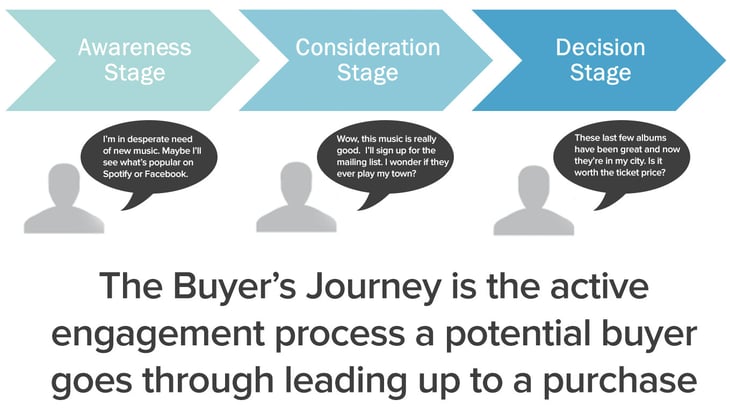
Let's get specific by reviewing the examples in our Best New Music Marketing blog before discussing more.
For a music fan:
Awareness Stage:
A listener hears a friend talking about the artist on Social Media.
Consideration Stage:
The listener decides to follow the artist on Social Media or an email list to see what this is all about.
Decision Stage:
The listener is blown away by the personality and music from the artist and decides to see for themselves at a live show.
For a potential customer of tour production business:
Awareness Stage:
The buyer knows their act's live performance needs to expand and is considering professional options. They are unsure if they should outsource the work, so they begin to read a variety of materials on how to better a band's live performance.
Consideration Stage:
The buyer decides hiring a tour production team is the right move for them after reading blogs and talking to fellow professionals. They seek out materials noting what a good tour production team offers and how to choose the right one.
Decision Stage:
The buyer begins comparing different tour production companies by compiling a list based on recommendations and websites that caught his/her attention.
Now remember, the idea here is to make pointed pieces of content for buyers along their journey. You can draw potential customers through their journey by answering their questions in each stage.
But how do I implement this in a practical way?
We get it. You're running a business. Inbound does takes time, and if you're like most businesses, time is a commodity in short supply. That's ok and shouldn't discourage you from implementing this strategy. We work with businesses every day that are doing amazing Inbound work, and they're just as slammed as you and me.
Here are great ways to get your Buyer's Journey content strategy rolling:
Use a worksheet to catalog existing content.
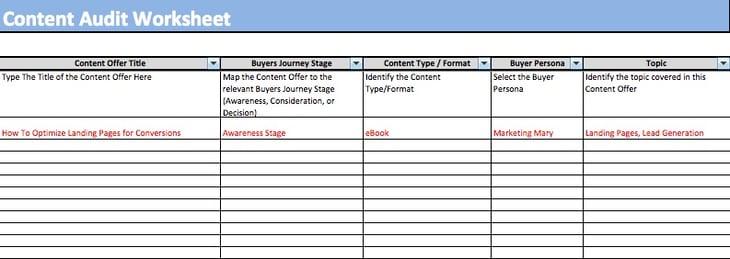
This is a good way to catalog all of your existing content and mold it to fit into an Inbound Marketing strategy. Download the Hubspot Content Audit Worksheet.
What could potential Inbound content be?
- Blogs
- eBooks
- Testimonials
- Case Studies
- Videos
- Journal Entries
- Song Explanations
- Free tracks
- Remixes
Almost any piece of content is a potential piece of Inbound content. It's all about its framing and delivery.
And also, by organizing your content by Buyer's Journey stages, it helps you illuminate the strengths and weaknesses of your current online sales funnel.
For example, you could be a PR company that only has call-to-actions related to directly working with you. This creates a few problems. One, it could alienate people that don't know enough about your company to feel comfortable requesting a quote, and two, it could waste your time by giving people that you don't want to work with an easy way to request your time.
It may also reveal weaknesses in your content strategy. You may find you don't have enough content for the consideration stage, which could be why your conversion rate is so low even though your visit numbers are high.
Create buyer personas and shape your content around them.
Buyer Personas are semi-fictional representations of your current and ideal customers — along with types of customers you don't want to work with. The idea here is to get inside the heads of customers. What's a day in their life like? How much money do they make? What are their pain points? How do they make money? How can you help them make more money? Is money even their goal? What are their responsiblities? Are they in the right position of authority to make a purchasing decision?
Once you determine what these are for your business, you can begin shaping your content strategy to answer their questions and pull them through your business's sales funnel.
"Everything in your inbound marketing strategy should relate back to your personas."
Here's part of a persona:
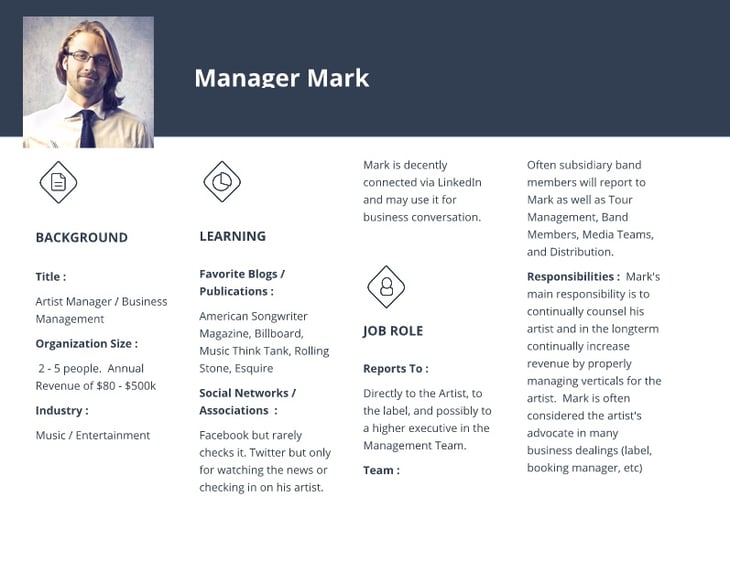 There's really no end to how in-depth you can make these, and the more detailed they are the better you will understand them.
There's really no end to how in-depth you can make these, and the more detailed they are the better you will understand them.
Hubspot offers a fantastic persona creation tool for free on makemypersona.com, so even though you may have to change/add some questions, it's a great starting point.
Once my personas are defined, how do they fit into the Buyer's Journey and my overall content strategy?
Here's a great overview of just that:
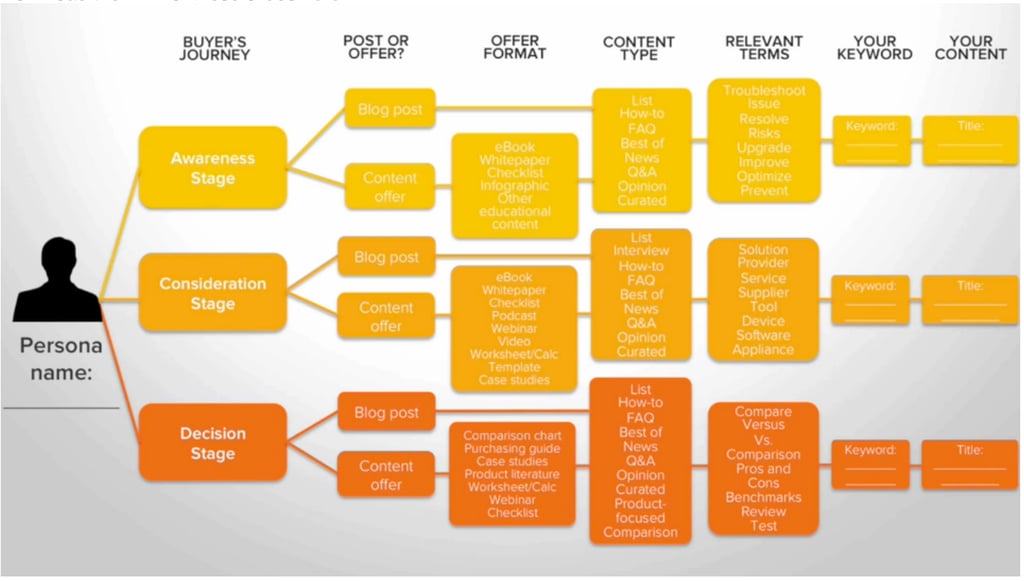
Everything in your inbound marketing strategy should relate back to your personas. Outlining your content strategy in this granular detail does wonders for your organization, believe me.
Adapt your current content strategy to fit into Inbound
Inbound is all about creating the right content, so if you're already devoting some of your time to content curation (social media, blogs, newsletters, educational materials, etc.), you're already part of the way there. It's just a matter of shaping the content to fit into the content map via your personas. The content audit worksheet mentioned above is a great way to figure out your options.
The beauty of Inbound Marketing is its ability to bring in a consistent stream of visitors, leads, and customers over a long period of time. In other words, it's sustainable, and it reacts positively to the more effort you put into it, so get to it!
Thanks to Hubspot for a few of the images in this post.
